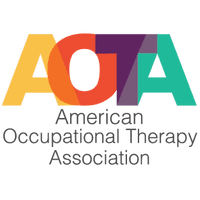Eye Teaming Therapy for Children: Challenges, Symptoms & More

Having healthy, clear vision, where both eyes work together in a precise and coordinated way, is vital in reaching your child's developmental milestones. However, children often suffer from specific oculomotor dysfunctions, which can affect reading and their performance in school [1] Eye teaming or convergence dysfunction is one such common eye problem in children. Fortunately, according to the National Eye Institute, vision therapy can treat eye teaming problems in younger children to improve their vision system. [2]
While the gaze of the eyes, where both eyes point to the same target, is essential for accurate vision, motor coordination of both eyes is equally important. The motor coordination of your eyes is called 'eye teaming.' Eye teaming therapy aims at giving you a single and comfortable vision of far and near objects with accurate depth perception. [1] It is a visual skill that allows both eyes to work precisely and coordinate.
If you think your child has a problem reading or focusing on things around them, this article will help you better understand eye teaming and offer insight into vision therapy.
What is eye teaming?
Children below the age of 12 years do 80% of their learning by their eyes. [3] Your child requires the following seven visual abilities for effective learning: [4]
Visual Acuity
Accommodation
Eye teaming
Visual tracking (Eye movements)
Perception
Hand-eye coordination
Imagery
Eye teaming refers to the coordination of both eyes to focus on the same object. It is typically characterized by convergence insufficiency or convergence excess. Whenever your child has a convergence insufficiency or binocular vision anomalies, there will be a problem with eye teaming ability. [4]
With convergence insufficiency, your child will be unable to converge their eyes or to sustain convergence. They will not have the exact perception of the distance and will have trouble focusing on any object. [4,5] In either case, it may seem like your child is failing to concentrate or read books. There may also be other signs that your child may have eye teaming problems.
What symptoms will my child have in eye teaming problem?
Eye teaming challenges are prevalent in school children. [6] As a parent, you can closely observe your child's behavior while reading a book together. You may notice that your child may often act weird while holding a book at the desk and trying to read from it. Although the problem seems simple, it may be due to your child's eye teaming difficulties, resulting in troubles with reading.
Eye teaming problems will be seen as the following signs in your child: [5, 6]
Difficulty keeping their eyes open due to strain, fatigue, or sensitivity to light
Headaches due to dizziness or vertigo
Intermittent blurred vision
Burning sensation in the eyes
Having double vision
Dry or watery eyes
How do I know if my child is facing eye teaming challenges?
Often, you may experience that the moment you ask your child to read from a book, they either avoid doing it or may fall asleep at the desk. However, other behaviors can indicate eye teaming challenges. If your child is facing an eye teaming challenge, it can manifest as: [4,5]
Head tilting while reading
Holding reading material at an angle
Difficulty catching a ball
Difficulty walking down the stairs
Showing sensitivity towards light by squinting
Closes an eye or tries to cover one eye while reading
Omits words or letters while reading
Suppose you see such signs and constantly observe that your child avoids reading books. In that case, you need to consult a pediatric ophthalmologist or a developmental optometrist for the best advice and accurate diagnosis of the existing medical condition.
What can I do to help my child with eye teaming problems?
The best way to help your child is to consult an ophthalmologist or a developmental optometrist. They can diagnose the eye teaming problem with the help of proper testing, such as:
Self-report symptoms: Where you and your child can note the symptoms experienced. Depending on the intensity of the symptoms, the specialist can decide the line of treatment. [7]
Comprehensive eye examination: The ophthalmologist or developmental optometrist will perform a thorough eye examination to check visual acuity and refractive error.
Binocular vision testing: Motor and sensory testing of eye movements, i.e., visual tracking, will be analyzed. It includes accommodative testing and oculomotor testing. [8]
Sometimes eye teaming problems may be due to underlying conditions such as specific learning disabilities, dyslexia [8, 9], or acquired brain injury. [1] Adhering to eye examination schedules and the vision therapy recommended by the ophthalmologist or developmental optometrist for your child can help improve the challenges they face and develop their vision appropriately.
What are the vision benefits of the eye teaming exercises?
The treatment modalities for eye teaming problems include broad term vision therapy. Eye teaming therapy comprises passive treatment involving prism glasses or reading glasses to improve coordination and reduce double vision problems. Eye muscle exercises are an active form of therapy and include: [4, 10, 11, 12]
Pencil pushups exercise for improved binocular vision
Accommodative therapy to improve focus
Orthoptic activities are done on machines or computers to improve fusion capacity
Binocular activities enhance depth perception and focus
Visual tracking exercises for precise and coordinated way of eye movement
The conventional vision exercises can include simple convergence exercises at home. [10] The following vision benefits are reported after eye muscle exercises:
Improvement in the accommodative ability of the eyes after vergence and accommodative training [6]
Enhanced visual functions like visual tracking
The convergence exercises suppress the physiological diplopia (seeing two images of a single object)
Improve monocular skills
Sustained improvements in the signs and symptoms [11]
Better concentration and less distraction by noises
Walk down the staircase without difficulty in focusing
Improved reading and visual skills [12]
We can see gradual improvements with proper modifications to the exercises according to your child's needs and development progress. Training with a family member will help your children carry out the activities in a home setting. Compliance with eye teaming therapy is essential for better results. [4,10]
Conclusion
Eye teaming problems are characterized by poor eye coordination and poor focus. It is one of the common vision problems in children, who often encounter difficulty reading. Eye teaming therapy is the first line of treatment for this type of vision problem in children.
It is necessary to take your child for a regular eye check-up and follow eye teaming treatment plans as a parent. The best part is that most of these can be done in-home settings. The therapy can help enhance:
the vergence capacity of the eyes,
improve their coordination, and
better vision quality.
Graded routine eye exercises have significantly improved children with eye team problems. [10,11] These inexpensive and straightforward therapy shows positive results to treat eye teaming problems.
How Kinspire Can Help
Looking for routine vision and developmental exercises for your child? Kinspire makes therapy do-able.
We match you with a licensed pediatric occupational therapist who will support you every day—no waiting lists, no weekly-only check-ins. Your OT will help you:
Identify if visual-motor issues may be contributing to reading or learning challenges
Integrate vision-based and sensory-motor strategies into your daily routines
Monitor progress and update your child’s care plan as they grow
You don’t have to navigate this alone. With Kinspire, you get expert care that fits your life.
👉 Book your free consultation today and find out how we can help.
References
Johansson J, Berthold Lindstedt M, Borg K. Vision therapy as part of neurorehabilitation after acquired brain injury - a clinical study in an outpatient setting. Brain Inj. 2021, 5;35(1):82-89. https://pubmed.ncbi.nlm.nih.gov/33297770/
https://www.nei.nih.gov/learn-about-eye-health/eye-conditions-and-diseases/convergence-insufficiency. Accessed on January 06, 2022
Curtis MD, Weaver JL, Wingert TA. Healthy Eyes Healthy People®: Increase the Percentage of Kindergartners Having Eye Exams. https://www.researchgate.net/publication/273457301_Healthy_Eyes_Healthy_PeopleR_Increase_the_Percentage_of_Missouri_Kindergartners_Having_Eye_Exams
McGregor ML. Convergence insufficiency and vision therapy. Pediatr Clin North Am. 2014, 61(3):621-30. https://pubmed.ncbi.nlm.nih.gov/24852157/
Randgaard T, Tharaldson T. Handbook of common childhood disorders of the eyes for parents and educators (Doctoral dissertation, Pacific University). https://core.ac.uk/download/pdf/212801479.pdf
Jang JU, Jang JY, Tai-Hyung K, Moon HW. Effectiveness of Vision Therapy in School Children with Symptomatic Convergence Insufficiency. J Ophthalmic Vis Res. 2017 Apr-Jun;12(2):187-192. https://pubmed.ncbi.nlm.nih.gov/28540011/
Bade A, Boas M, Gallaway M, Mitchell GL, Scheiman M, Kulp MT, Cotter SA, Rouse M; CITT Study Group. Relationship between clinical signs and symptoms of convergence insufficiency. Optom Vis Sci. 2013, 90(9):988-95. https://pubmed.ncbi.nlm.nih.gov/23958713/
Hussaindeen JR, Shah P, Ramani KK, Ramanujan L. Efficacy of vision therapy in children with learning disability and associated binocular vision anomalies. J Optom. 2018 Jan-Mar;11(1):40-48. https://pubmed.ncbi.nlm.nih.gov/28599912/
Raghuram A, Gowrisankaran S, Swanson E, Zurakowski D, Hunter DG, Waber DP. Frequency of Visual Deficits in Children With Developmental Dyslexia. JAMA Ophthalmol. 2018, 136(10):1089-1095. https://pubmed.ncbi.nlm.nih.gov/30027208/
Adler P. Efficacy of treatment for convergence insufficiency using vision therapy. Ophthalmic Physiol Opt. 2002, 22(6):565-71. https://pubmed.ncbi.nlm.nih.gov/12477022/
Shin HS, Park SC, Maples WC. Effectiveness of vision therapy for convergence dysfunctions and long-term stability after vision therapy. Ophthalmic Physiol Opt. 2011, 31(2):180-9. https://pubmed.ncbi.nlm.nih.gov/21309805/
Hurst CM, Van de Weyer S, Smith C, Adler PM. Improvements in performance following optometric vision therapy in a child with dyspraxia. Ophthalmic Physiol Opt. 2006, 26(2):199-210. https://pubmed.ncbi.nlm.nih.gov/16460320/




